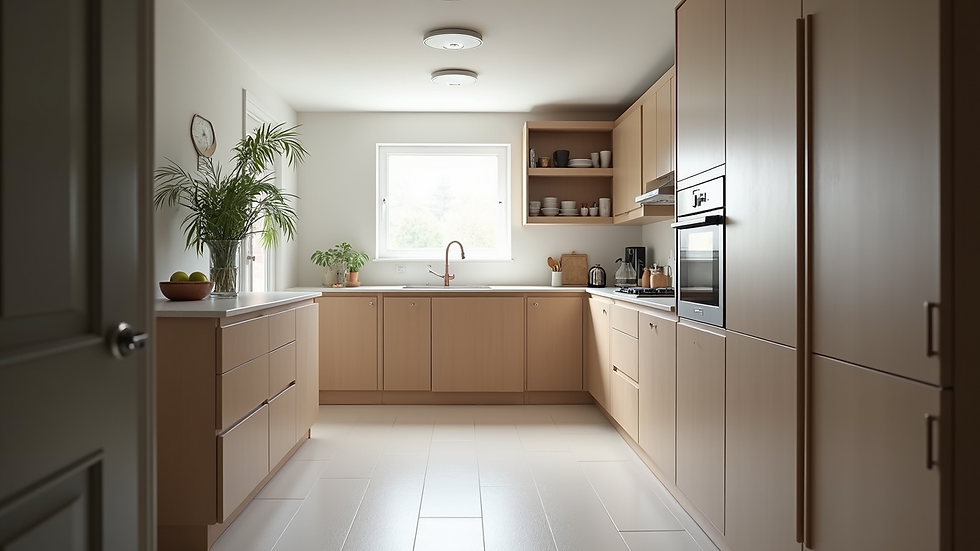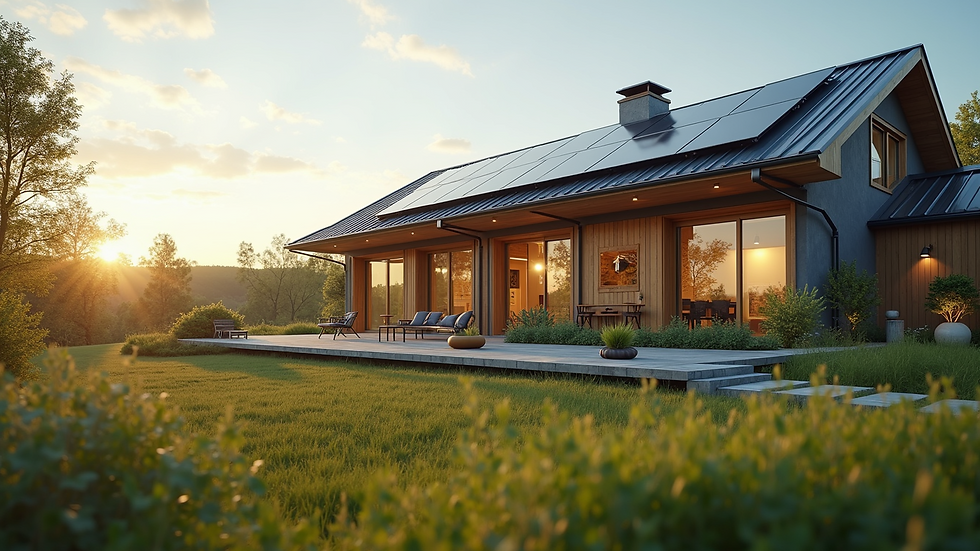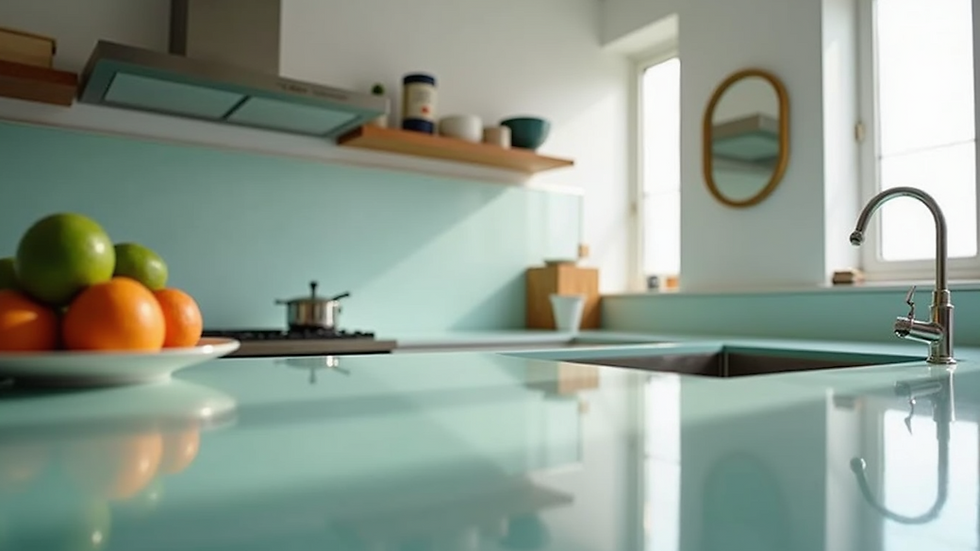Expert Tips for Kitchen Design and Installation
- Chesway Slabbert

- Aug 4, 2025
- 4 min read
Designing and installing a kitchen can be an exciting yet daunting task. It is often considered the heart of the home, where families gather, meals are prepared, and memories are made. Whether you are renovating an existing space or starting from scratch, there are several key factors to consider. This guide will provide you with expert tips to help you create a functional and beautiful kitchen that meets your needs.
Understand Your Space
Before diving into design choices, take a moment to assess your kitchen space.
Measure Your Area: Start by measuring the dimensions of your kitchen. This includes the length and width of the room, as well as the height of the ceilings.
Consider the Layout: Think about how you use your kitchen. Do you need a lot of counter space for meal prep? Would an island be beneficial?
Identify Traffic Flow: Ensure that there is enough space for people to move around comfortably. A well-planned layout can prevent congestion during busy cooking times.
By understanding your space, you can make informed decisions that will enhance both functionality and aesthetics.
Choose a Style
Your kitchen should reflect your personal style.
Traditional: This style often features warm colors, classic cabinetry, and ornate details.
Modern: A modern kitchen is sleek and minimalistic, often using materials like stainless steel and glass.
Farmhouse: This style embraces rustic charm with wooden elements, open shelving, and a cozy feel.
Industrial: Characterized by raw materials, exposed brick, and metal accents, this style is perfect for urban settings.
Select a style that resonates with you and complements the rest of your home.
Plan Your Layout
The layout of your kitchen is crucial for efficiency.
The Work Triangle: This concept involves placing the sink, stove, and refrigerator in a triangular layout. This design minimizes movement and makes cooking more efficient.
Zones: Consider creating specific zones for cooking, cleaning, and storage. This can help streamline your workflow.
Island or Peninsula: If space allows, adding an island or peninsula can provide extra counter space and storage. It can also serve as a gathering spot for family and friends.
A well-planned layout can make your kitchen more enjoyable to use.
Select Quality Materials
Choosing the right materials is essential for both durability and aesthetics.
Countertops: Options like granite, quartz, and butcher block each have their pros and cons. Granite is durable and heat-resistant, while quartz offers a wide range of colors and patterns. Butcher block adds warmth but requires more maintenance.
Cabinetry: Invest in quality cabinetry that will stand the test of time. Solid wood is a popular choice, but there are also high-quality laminate options available.
Flooring: Consider materials that are easy to clean and can withstand spills. Tile, vinyl, and hardwood are all good options.
Selecting quality materials will ensure your kitchen remains beautiful and functional for years to come.
Lighting Matters
Good lighting can transform your kitchen.
Task Lighting: This is essential for areas where you prepare food. Under-cabinet lights can illuminate countertops effectively.
Ambient Lighting: Ceiling fixtures or recessed lights can provide overall illumination for the space.
Accent Lighting: Consider adding pendant lights over an island or decorative fixtures to enhance the style of your kitchen.
A well-lit kitchen is not only more functional but also more inviting.
Storage Solutions
Maximizing storage is key in any kitchen design.
Cabinet Organization: Use pull-out shelves, lazy Susans, and drawer dividers to keep everything organized and accessible.
Vertical Space: Don’t forget about the vertical space. Install shelves or cabinets that reach the ceiling to take advantage of every inch.
Multi-Functional Furniture: Consider furniture that serves multiple purposes, such as an island with built-in storage or a dining table with drawers.
Effective storage solutions can help keep your kitchen clutter-free.
Appliances Selection
Choosing the right appliances is crucial for a functional kitchen.
Energy Efficiency: Look for appliances with the ENERGY STAR label. These models can save you money on utility bills.
Size and Capacity: Ensure that your appliances fit your cooking habits. If you cook for a large family, a double oven or a larger refrigerator may be necessary.
Style: Choose appliances that match your kitchen's style. Stainless steel is versatile, while colored appliances can add a fun pop.
Selecting the right appliances can enhance your cooking experience.
Hire Professionals
While DIY projects can be rewarding, hiring professionals can save you time and stress.
Designers: A kitchen designer can help you create a layout that maximizes space and meets your needs.
Contractors: Skilled contractors can ensure that the installation is done correctly and efficiently.
Electricians and Plumbers: These professionals are essential for safely installing appliances and fixtures.
Investing in professional help can lead to a smoother renovation process.
Budget Wisely
Creating a budget is essential for any kitchen project.
Set Priorities: Determine what aspects of your kitchen are most important to you. This could be high-quality appliances, custom cabinetry, or unique design features.
Allocate Funds: Break down your budget into categories such as materials, labor, and appliances. This will help you stay on track.
Plan for Contingencies: Unexpected expenses can arise during renovations. Set aside a portion of your budget for these surprises.
A well-planned budget can help you achieve your dream kitchen without financial stress.
Embrace Trends Wisely
While it can be tempting to follow every trend, it is important to choose wisely.
Timeless Features: Invest in classic elements that will stand the test of time, such as subway tiles or shaker-style cabinets.
Incorporate Trends Sparingly: If you love a current trend, consider incorporating it in smaller ways, such as through accessories or paint colors.
Personal Touches: Make your kitchen unique by adding personal touches that reflect your style.
Balancing trends with timeless design can create a kitchen that feels both modern and enduring.
Final Thoughts
Designing and installing a kitchen is a significant undertaking, but with careful planning and consideration, it can be a rewarding experience. By understanding your space, choosing a style, and selecting quality materials, you can create a kitchen that is both functional and beautiful.
Remember to prioritize your needs, embrace trends wisely, and consider hiring professionals to help bring your vision to life. Your dream kitchen is within reach, and with these expert tips, you are well on your way to creating a space that you and your family will love for years to come.





Comments